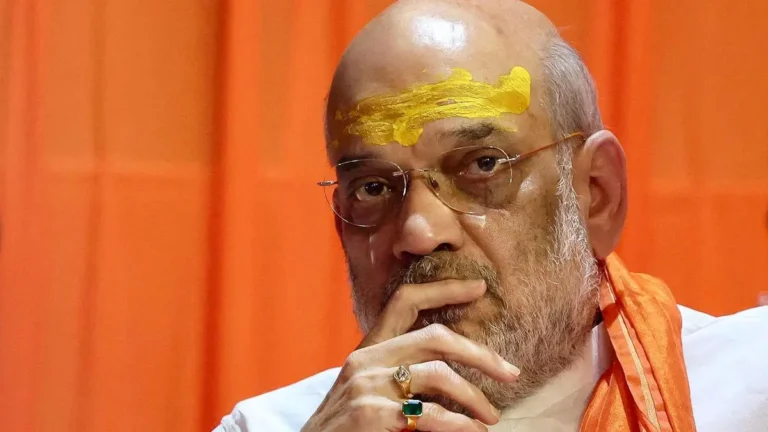Rise and Fall of BYJU’S from 2020 to 2023
Have you heard of the term unicorn?
In business terms, a unicorn is a privately held startup company valued at over $1 billion. India has 108 unicorns. It’s a good number for a growing economy like ours.
But most of these companies are not profitable. Take Byju’s, for example. At one point, it was one of India’s most valued startups, the golden eyed boy of the unicorn club.

But in this last one year, it has seen a dramatic downturn. Investors no longer believe in its potential, employees are being laid off, and its owner, Byju Ravindran, is no longer a billionaire. So what exactly went wrong? Are Indian startups highly overvalued? And is this summer turning into a funding winter?
More importantly, why should you care?
The founders were Byju, Ravindran and Divya Gokulnath. So that’s where the name Byju’s comes from. Byju was an engineer by profession.
He was coaching students in mathematics. So the company started with online videos, learning programs for competitive exams. But things took a turn in 2015.
That’s when Byju’s launched its learning app. By 2018, the app had more than 15 million subscribers. Byju’s became a unicorn.
It was valued at over $1 billion. But the boom really happened during the pandemic. Everyone was at home.
They were all learning on their devices. So Byju saw a meteoric rise. There was exponential growth.
It became the growing star of the ed tech market. And what did the company do next? They decided to expand. They went on an acquisition spree.
They acquired a company called White Hat Junior, another startup in the education technology space, or what they call ed tech. This acquisition was for $300 million. Then they bought a tutorial chain called Akash.
This was for $950,000,000. And it did not end here. Byju’s kept adding more companies to its shopping cart, the likes of Topper, Epic and Great Learning.
They came at a hefty price. We’re talking about more than $2 billion. But expansion was not the only thing on their mind.
Company scaled up
The company scaled up its marketing, too. It poured millions into promotions. Byju’s became the main sponsor of the Indian cricket team.
It was the official sponsor of the FIFA World Cup. It robed in Bollywood, star Shah Rukh Khan and football legend Lionel Messi, all to just promote the brand. This was a dream run for Byju’s.
But like most good things, this too came to an end. You see, Byju’s was depending on students to learn online. They were expecting them to stay at home.
DownTurn
But soon, the world opened up. Students returned to schools, but Byju’s kept spending. It kept growing.
Investors kept pouring in money they did not expect or predict a downturn. Which brings us to 2021. That’s when the first signs of trouble emerged.
Byju’s posted a loss of 327 million dollars. This was 17 times more than 2020. And this was just the beginning.
Since then, Byju’s has only gone from one scandal to another. First, there were complaints by parents. They said Byju sales executives were forcing them to buy courses.
Some of these parents could not even afford them. But the Byju’s executives did not care about that. They only cared about hitting their sales targets.
Start of predatory practices
Soon, there was an outcry about predatory practices. Byju’s was accused of exploiting customers. Then came the financial troubles.
The company tried cost cutting, not by reducing expenditure, but by firing hundreds of employees. Their troubles continued, though. In April this year, their office was raided in Bengaluru.
In May, Byju’s lenders filed a suit in a US court. They accused the company of defaulting payments and breaching the loan agreement. In the month of June, Byju’s was in the news again, this time for missing an interest payment of nearly $40 million.
So you get the drift. The once celebrated company is now mired in debts and scandals. In 2022, its valuation was worth $22 billion.
This year, it has been slashed to 5.1 billion. $5.1
billion. It’s an extraordinary unraveling. Also a cautionary tale, because this is not the story of just one company.
This is the story of most of India’s unicorns. You see, in the startup business, a company’s valuation is everything. But more often than not, this valuation does not match the real value of the company.
I know there’s a lot of jargon in the startup world, like bootstrapping, angel investors, and I’m not going into all of that. But let’s talk about the one thing that defines all startups valuation. When startups begin, they are mostly just an idea.
There’s no value attached to that idea, but slowly it grows into a business. Founders present a business plan to investors. Investors evaluate these plans and then they put their money into the company.
Now, funding for startups usually happens in rounds. The first round is called the seed capital. And this round is absolutely crucial for things to get rolling.
But how do investors determine the value of a business?
There is no set formula, but there are a few parameters, like the attractiveness of a plan, how reasonable it is, the appeal of the product in the market and the background of the founders. Basically all subjective aspects. There are some standard metrics, like profit after tax or earnings before interest, but these are not really considered.
In most cases, it’s because most of these startups usually start by running at a loss. So that’s how startups are valued. They’re valued on the basis of future earnings, even though they have no profits to show.
The problem begins when these valuations are far removed from reality. And this seems to be the case with a lot of Indian startups, the likes of Byju’s, Paytm, Bharat, Pay, Swiggy, Zomato. I’m sure you’ve heard of all of them, perhaps even used most of them.
These are all highly valued companies, but they’re all burning money. You see, valuations no longer have any relation to success and profits. It is actually a huge problem in the Indian startup ecosystem.
One report says most early stage startups in India are overvalued and this hyper valuation is now coming back to bite them. I have some numbers. 55 of India’s most valued startups remain in a loss.
They have an average annual revenue of $76 million. But how much do they spend? An average of 122 million dollars. So for every rupee that these startups earn, they end up burning one and a half rupees.
And this may have worked before, when there was a seemingly unlimited flow of capital. But now inflation is soaring, interest rates are rising and capital funding is slowing down. In 2022, venture capital firms invested $46 billion in India.
This is 29% less than the previous year. Basically, investors are wary. It’s what many are calling a funding winter.
Full picture ?
So here’s the full picture. Indian startups are burning money. They no longer have unlimited access to unlimited capital.
It may look like a downturn, but basically this is a reset. These companies grew at an unprecedented pace until 2021. They were valued at sky high levels, and now they’re finally being valued at a more realistic level.
Does that mean that the Indian startup economy is failing? Well, no, it’s just that the bubble is bursting. Like I said, this is a reset. Indian startups have immense potential, but valuations need to be based on reality, not illusions.
The other problem is often the way these startups function the lack of internal auditors, independent board members and basically due diligence. You can say Indian startups are at a crossroads, US. They need some course correction and growth will follow.





